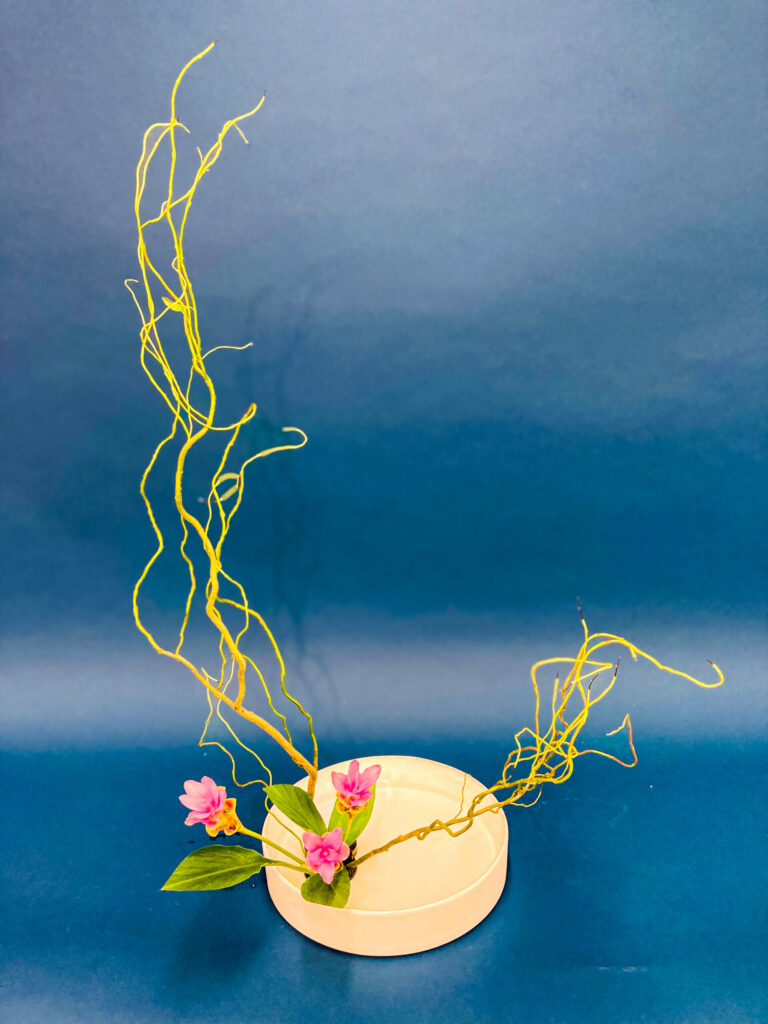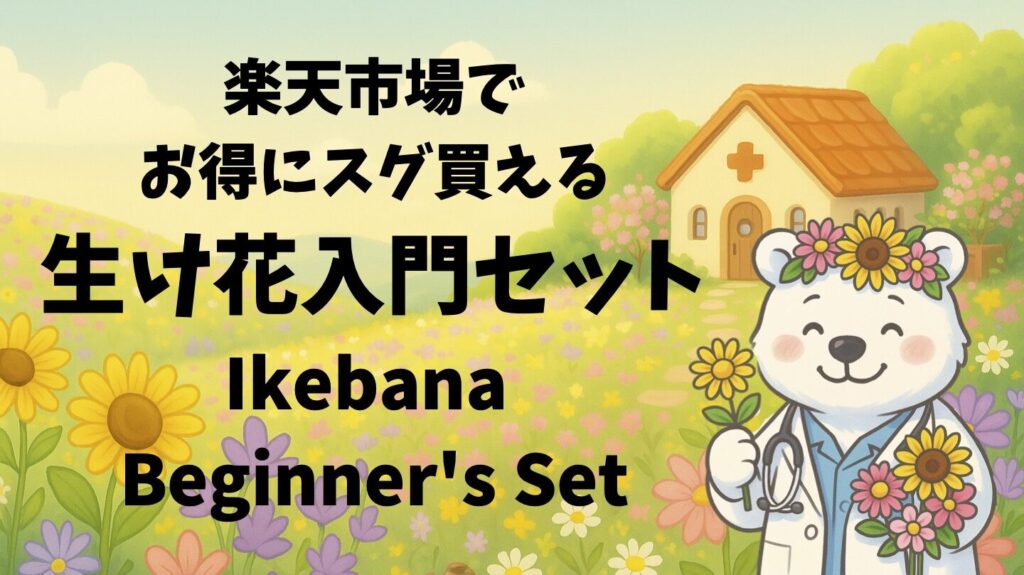- 🌸 Moments of Healing Found in the Shapes of Nature
- 🌿 Materials & Design Elements
- 🧠 A Doctor’s View – How Floral Form Reflects Healing
- 🌼 What is Curcuma?
- ✂️ Trimming the Leaves – The Art of Observation and Adjustment
- 📘 Reflections
- 🌸 Send Flowers Worldwide — A Thoughtful Gift Across Borders
- 📢 How would you arrange these flowers?
- 🌸 If this post inspired you to try ikebana, check out our recommended lessons here:
🌸 Moments of Healing Found in the Shapes of Nature
As a physician who often witnesses physical and emotional exhaustion, I find solace in the language of flowers.
The twisted yet graceful lines of corkscrew willow remind me of how healing is rarely linear—it’s full of turns, detours, and ultimately growth.
Curcuma, with its gentle pink hue, brings the soft support we all long for when resilience feels just out of reach.


※This is an affiliate link. Your purchase supports this blog – thank you!
🌿 Materials & Design Elements
- Materials
・Curcuma
・Corkscrew Willow - Vessel
A white, flat dish-style suiban—an understated vessel that highlights the movement of the floral materials. - Artistic Intent
Using the height and spread of corkscrew willow to emphasize “space,” and arranging curcuma to bring a sense of “stability” and “harmony.” I aimed to create a relationship where the materials seem to “converse” with one another.
🧠 A Doctor’s View – How Floral Form Reflects Healing
In medicine, we recognize how stress manifests physically—insomnia, poor digestion, weakened immunity.
But visual experiences can gently interrupt this cycle.
An ikebana piece like this—reaching upward, airy, composed—helps restore internal calm.
It’s a visual metaphor for healing: not linear, not perfect, but beautiful in its persistence.
🌼 What is Curcuma?
Curcuma belongs to the ginger family and is native to tropical Asia.
In addition to being ornamental, it’s known for its medicinal and culinary uses.
Its sturdy nature and tropical allure make it ideal for warm-season arrangements.
✂️ Trimming the Leaves – The Art of Observation and Adjustment
In this arrangement, the leaves of the Curcuma appeared slightly oversized in relation to the overall composition.
If left as they were, they would have drawn too much attention and disrupted the balance.
So, I carefully trimmed them by hand, shaping them into a more natural, subtle form.
Ikebana is not just about placing flowers in a vase—it’s about thoughtfully enhancing what’s given.
By observing the whole and daring to refine or reduce when needed, we allow harmony and clarity to emerge from within the materials.
📘 Reflections
After a long day of consultations and procedures, I found myself surprisingly refreshed after creating this work.
The rhythm of choosing, cutting, and placing the materials shifted my mental state—from fatigue to quiet focus.
In many ways, ikebana is my personal form of therapy.
It doesn’t just heal the observer—it heals the maker, too.
🌸 Send Flowers Worldwide — A Thoughtful Gift Across Borders
There’s something timeless and powerful about giving flowers. Whether it’s a birthday, an anniversary, or simply a “just because” gesture, a thoughtfully arranged bouquet can speak volumes when words fall short.
As a flower enthusiast and physician, I’ve seen how even a single bloom can lift someone’s spirits. If you’re looking for a reliable way to send flowers—not only within the U.S. but also internationally—I recommend Flower.com. They offer beautiful seasonal arrangements, gift baskets, and even same-day delivery in many countries around the world.
From Japan to Europe to the Americas, Flower.com partners with local florists to ensure your heartfelt gift arrives fresh and on time.
Because flowers don’t just decorate—they communicate care, warmth, and connection, no matter the distance.

※This is an affiliate link. Your purchase supports this blog – thank you!
📢 How would you arrange these flowers?
Feel free to share your thoughts in the comments, or tag your own work with #ikebanadoctor.
Let’s create a space where flowers and healing meet.
🌸 If this post inspired you to try ikebana, check out our recommended lessons here:





コメント